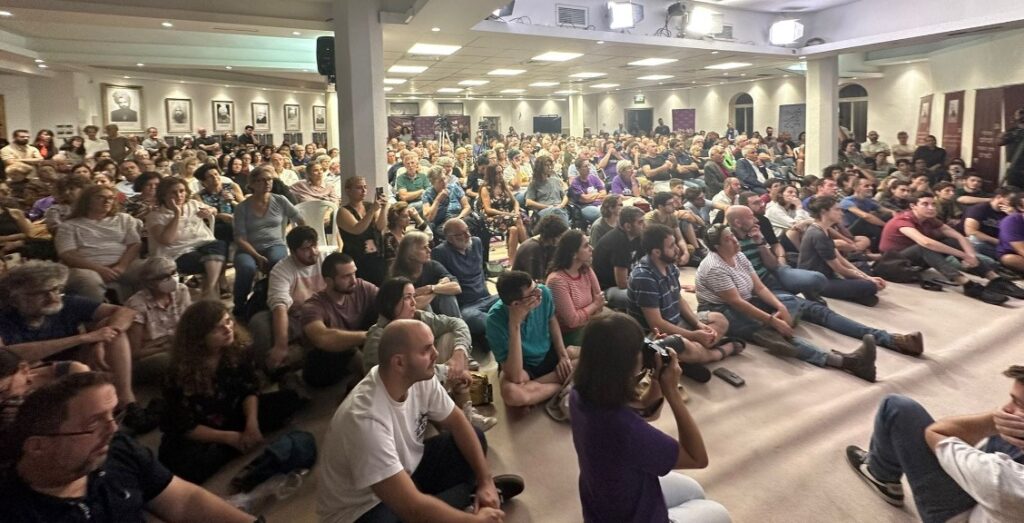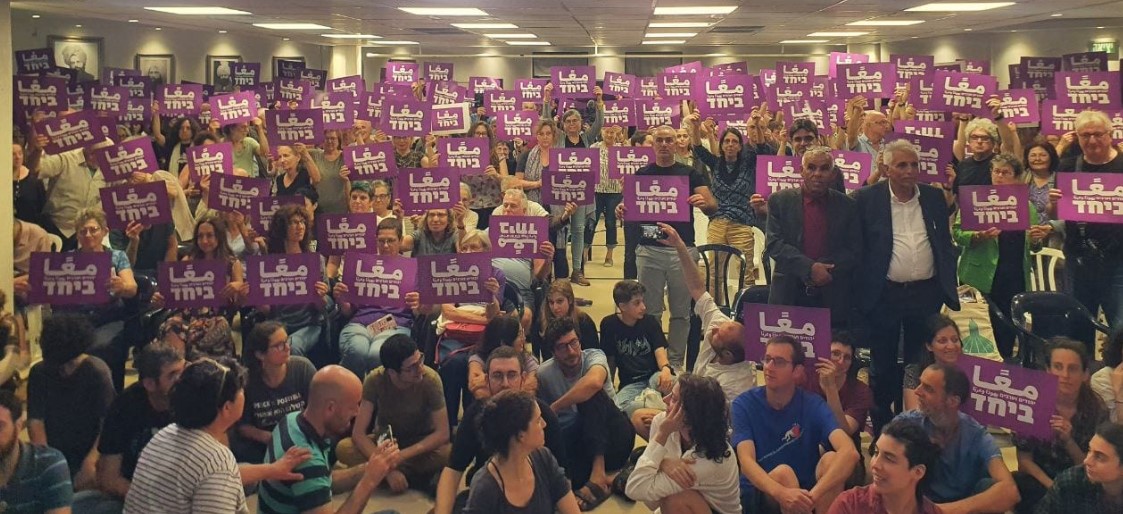By John Pickard
Socialists have argued that there can be no success in the struggle for Palestinian rights unless it also means that there is a place for the Israeli Jewish community in that part of the world. An internecine conflict between Israelis and Palestinians, between Jews and Arabs, will not bring an end to conflict in the region.
The specific role of the labour movement – including, and in particular, the international labour movement – is that it is the natural vehicle of workers’ unity and common struggle. Neither the representatives of capitalism in Israel, nor their equivalents in the Arab states – and that includes the Palestinian Authority and Hamas – have any interest in, or are capable, of resolving the conflict. They are incapable of providing any way forward.
Yet in the midst of the carnage of war and with the majority of the Israeli population being behind their armed forces, the idea of a political movement of Palestinian and Israeli workers looks a long way off. It is inspiring, therefore, to read a report of a large meeting in the Northern Israeli port city of Haifa, where the Ahmadiyya Mosque was host to a mass assembly calling for peace.
Overflow meetings in other rooms in the mosque
The meeting was reported on the website of Al Hakam, a weekly English newspaper for members of the Ahmadiyya Muslim community around the world, and it was in the prayer room of its Haifa Mosque that the meeting took place. More than three hundred chairs were filled, so people sat on the floor. So many more came that finally the mosque had to open up other rooms so that people could attand overflow meetings, to which speeches were relayed.
The Ahmadiyya community in Haifa reported to Al Hakam that it has recently hosted no fewer than three separate gatherings of Jews and Arabs in Haifa, which is a very mixed city.
One of the Jewish attendees at the meeting told the newspaper, “In my view, this gathering serves as a significant testament that demonstrates to the Islamic community, the Jewish community, and the global community at large that we can engage in meaningful dialogue that brings us together. We are not adversaries; we are allies. Together, we achieve success.”

“This event brought a smile to my face” another Jewish attendee said, “when I was in a difficult emotional state and lacked the will to even smile. After hearing the address of the Amir of the community [in the Holy Land], I feel a profound sense of relief. It was my first time meeting him, and I must say he is an exceptional individual. I wholeheartedly wish he could lead our country as Prime Minister.”
Five thousand leaflets were distributed
The meeting was organised by the ‘Standing-Together’ organisation and the attendees can be seen in the picture above holding placards with the word ‘together’ in Arabic and Hewbrew. It was organised by representatives from different faiths, including Jewish rabbis, Christian pastors, Muslim imams, Druze Imams, and even a Buddhist monk. Their efforts made the meeting possible.
“The following day” Al Hakam reported, the organisers, “held another interfaith event in which we reached out to all Jewish and Muslim neighbours through text messages and social media promotions: 5,000 advertisements were printed and distributed within a few days, reaching people in the surrounding areas”.
In the event, six hundred local Jews and Arabs came together for the event, a number far exceeding expectations, especially given the prevailing atmosphere in Israel at the moment. It was an increase by more than a third on the number attending a joint meeting that had been held before the war.
Muslims and Jews have lived together for more than 1,300 years
The Amir of the Mosque made a profound impression on many of those there, according to Al Hakam. “Muslims and Jews have lived together for more than 1300 years”, he said, “and Jews were given their rights under the Muslim rule. They gained an identity, status and position that they never got anywhere else. It was under the Muslim rule that they had these rights and they were respected. So, we lived together in coexistence for more than 1300 years”.
The organisers described the meeting as “a beacon of hope in a region marred by discord and conflict”.
We should have no illusions in this meeting; it was not a meeting of workers on strike or in struggle. It was not a meeting of the labour movement calling for socialist measures against Israeli or Arab capitalists. In many ways it is likely that the attendees were not typical of Israeli Arabs and Jews.
But one can see from the photographs that there was a large proportion of young people present. And one important effect of the Hamas attack on October 7 and the war in Gaza is that they will bring about a profound change in Israeli politics – particularly afterwards.
In the minds of millions, established political ideas, beliefs and even prejudices, will be shaken to the core and will have to be thought through all over, as it were, from scratch. There are some on the left who simply write off the entire Israeli (Jewish) working class, and leave it out of all account in their political programmes and demands. They are wrong and this meeting was an answer to them. For all its faults and shortcomings, the meeting is an indication of the potential for unity that exists and for that reason worth publicising.



